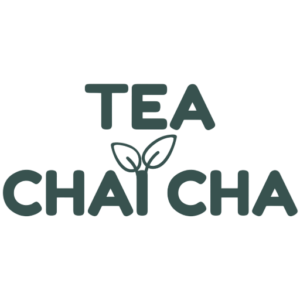Oolong tea is like the James Bond of the tea world – suave, sophisticated, and oh-so-popular.
It’s got Asia swooning over it, and now the Western world has joined the fan club.
Why? Because it’s not your run-of-the-mill cup of tea.
With oolong, every sip is like a surprise plot twist.
First, it’s all fruity, and the next, it’s diving into a pool of nuttiness.
But here’s the twist in the tale: brewing oolong is like mastering ancient tea Kung Fu.
And hey, it’s not just delicious; it’s got some serious health benefits too, like a secret agent protecting your heart and helping you shed those unwanted pounds.
In this guide, I’ll spill the tea on how to brew oolong like a pro, share tips for picking the finest varieties, decode the different types of oolong, and even reveal its superpower health benefits.
So, are you ready to be on a tea mission you won’t forget?
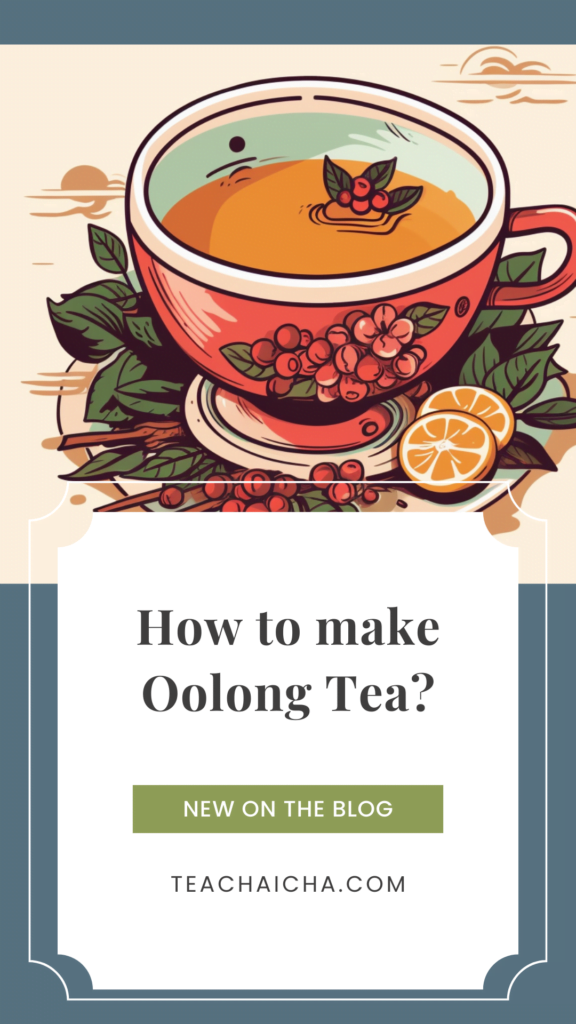
What Is Oolong Tea?
Oolong tea (the real deal) is made from the Camellia sinensis plant.
It’s mostly grown in China and Taiwan, and the Chinese folks call it “wulong,” which means “black dragon.”
Pretty cool, right?
Oolong comes in different flavors like light, dark, and green oolongs.
Each one has its own fancy aromas and tastes.
Some big shots in the oolong world are Milk Oolong and the oolongs from Fujian Province, like Da Hong Pao, Bai Jiguan, and Tieguanyin.
What makes oolong so interesting is its oxidation game.
See, green tea is all about no oxidation, and black tea goes all-in with oxidation.
But oolong?
It’s the middle child, with levels of oxidation ranging from 10 to 80 percent.
That’s why it’s got this crazy mix of flavors.
Oolong tea leaves are a classy bunch – always whole, and you can get them loose or in tea bags.
Some even come rolled and curled.
And each time you brew it, it gives fresh flavors and aromas. It’s a tea party that never gets old!
Now, about oolong’s history – it’s been around for centuries, and China and Taiwan are its playgrounds.
They sip it like it’s going out of style.
And trust me, it’s not!
Oolong tea is a classy, timeless sip that’s always in fashion.
7 Health Benefits of Oolong Tea
From heart-boosting antioxidants to blood sugar regulation, oolong has some impressive tricks up its sleeve.
Let’s learn more about these:
1. Boosting Heart Health
Drinking oolong tea is like giving your heart a high-five.
It’s packed with antioxidants, especially EGCG, which is a superstar when it comes to keeping your heart happy.
Studies in Japan even suggest that sipping five to six cups of oolong tea daily can be your secret weapon against heart diseases and type 2 diabetes.
Those antioxidants in oolong tea?
They’re like the shield protecting you from these serious illnesses.
2. Say Goodbye to Inflammation
Oolong tea isn’t just tasty; it’s got ninja-like anti-inflammatory properties.
It works its magic by reducing inflammation in your arteries and blood vessels.
That means it can help lower high blood pressure and keep those pesky blood clots at bay.
Plus, it’s got these cool compounds called tea polyphenols that are like bodyguards for your heart.
3. Cholesterol, Meet Your Match
Bad cholesterol (LDL) doesn’t stand a chance against oolong tea.
Some studies have shown that regular sipping can lower LDL cholesterol and boost the good kind (HDL).
So, by making oolong tea your daily ritual, you’re basically handing your heart a superhero cape.
4. Your Weight Loss Companion
Oolong tea contains polyphenols, particularly catechins and theaflavins, which have been associated with an increased metabolic rate.
This boost in metabolism can help your body burn calories more efficiently, aiding in weight management.
5. Fat Oxidation
Oolong tea is believed to stimulate the breakdown of fat cells, making it easier for your body to utilize stored fat as an energy source.
This can contribute to a reduction in overall body fat percentage.
6. Blood Sugar Buddy
Oolong tea has just the right amount of caffeine to help regulate your blood sugar.
It’s like your trusty sidekick in keeping those sugar levels in check.
7. Immunity Boost
Feeling a bit under the weather? Oolong’s got your back with a dose of vitamin C.
It’s like your personal shield against the common cold and flu.
So, grab a cup of oolong tea, and cheers to a healthier you!
Side Effects of Oolong Tea
It’s crucial to be aware of some potential side effects, especially if you’re in certain situations.
1. Pregnancy and Breastfeeding
If you’re expecting or nursing, it’s essential to tread lightly with oolong tea.
Limit your consumption to no more than 2 cups per day.
Oolong has a bit of caffeine, which can lead to side effects like nausea and dizziness.
And for breastfeeding moms, it might upset your little one’s tummy.
Experts suggest keeping your caffeine intake under 200 mg daily during this special time.
2. Caffeine Sensitivity
Oolong tea has about half the caffeine of your regular coffee cup.
If you’re sensitive to caffeine, you might want to steer clear of oolong.
Downing too many cups can bring on an irregular heartbeat, extra irritability, and tummy troubles.
3. Bone Health
Here’s a twist – oolong tea might mess with your body’s calcium and iron absorption.
Not great news if you’re dealing with osteoporosis, as it could lower your bone mineral density.
If you have a bone condition, it’s smart to chat with a healthcare expert before sipping that oolong.
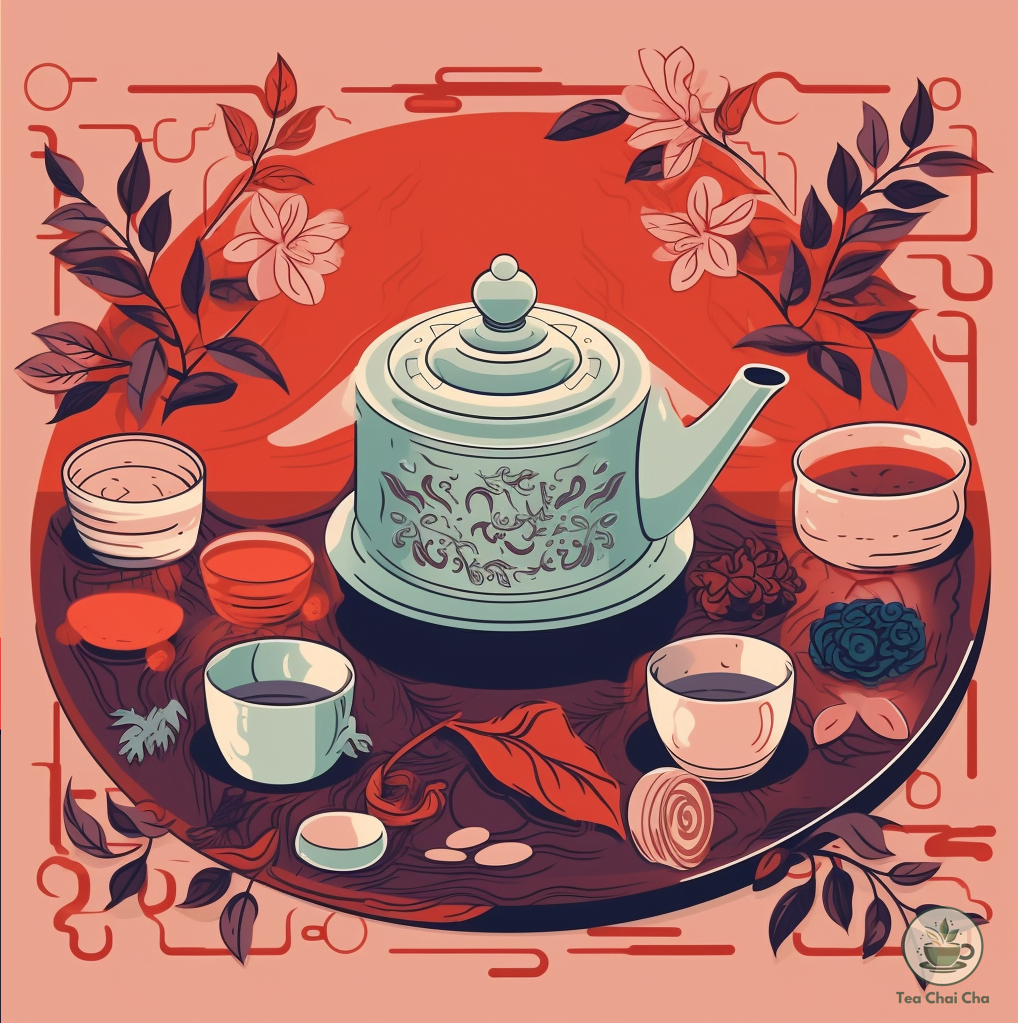
What You Need to Make Oolong Tea
Alright, let’s gear up to make some fantastic oolong tea!
Here’s what you’ll need to get started:
Ingredients
1. Oolong Tea Leaves
First and foremost, you need some quality oolong tea leaves.
You can choose from a variety of oolong types we discussed earlier, like light, dark, or green oolongs (I’ll talk about the oolong types in detail in next sections.)
Go for the one that tickles your taste buds.
2. Fresh Water
Good quality H2O is the base of any tea, and oolong is no exception.
Make sure it’s fresh and cold – filtered water is a great choice.
Tools
1. Teapot or Tea Infuser
You’ll need something to brew your oolong tea.
A teapot or a tea infuser will do the job.
If you’re feeling fancy, a gaiwan, a traditional Chinese tea set, is a stylish option.
2. Tea Kettle
To heat your water, you’ll want a kettle. Stovetop or electric, whichever you prefer.
3. Cups or Mugs
For sipping your freshly brewed oolong, of course!
Choose your favorite cup or mug to enjoy the flavors.
4. Timer
Precision is key in the tea world.
A timer helps you brew your oolong for just the right amount of time to unlock its full potential.
5. Optional: Temperature Control Kettle
If you’re a tea perfectionist, you might consider a kettle that lets you control the water temperature.
Different oolong teas require different temperatures, so this can be a handy tool.

How to Make Oolong Tea – Step-by-Step Guide
Now that we have our essentials on the kitchen top, let’s get brewing!
Step 1: Measure Your Oolong Tea Leaves
Start by measuring your oolong tea leaves.
You’ll want about 1 to 2 teaspoons of loose leaves per 8-ounce cup.
Adjust the quantity based on your personal preference for a stronger or milder brew.
Step 2: Heat Your Water
Boil fresh, filtered water and let it cool slightly.
The ideal water temperature for oolong tea varies depending on the type:
- For light oolongs, aim for around 185°F (85°C).
- For dark oolongs, go a bit hotter at about 195°F (90°C).
- Green oolongs shine at a cooler 175°F (80°C).
Step 3: Preheat Your Teapot or Infuser
Pour a small amount of hot water into your teapot or infuser to warm it up.
Swirl it around and then discard the water.
This helps maintain the tea’s temperature during brewing.
Step 4: Add Your Oolong Tea Leaves
Place your measured oolong tea leaves into the teapot or infuser.
Step 5: Pour in the Hot Water
Gently pour the hot water over your oolong tea leaves.
Be sure to cover all the leaves, allowing them to unfurl and release their delightful flavors.
Step 6: Steep Your Oolong Tea
Set your timer!
Steeping time depends on the type of oolong:
- Light oolongs usually need 3-5 minutes.
- Dark oolongs might require 5-7 minutes.
- Green oolongs are ready in 2-3 minutes.
Step 7: Sip and Savor
Once the timer buzzes, your oolong tea is ready to be enjoyed.
Pour it into your cup or mug and take a moment to savor the aroma and taste.
Each sip is a new adventure, so enjoy it to the fullest.
Scroll to the bottom to have complete recipe with ingredients and instructions.
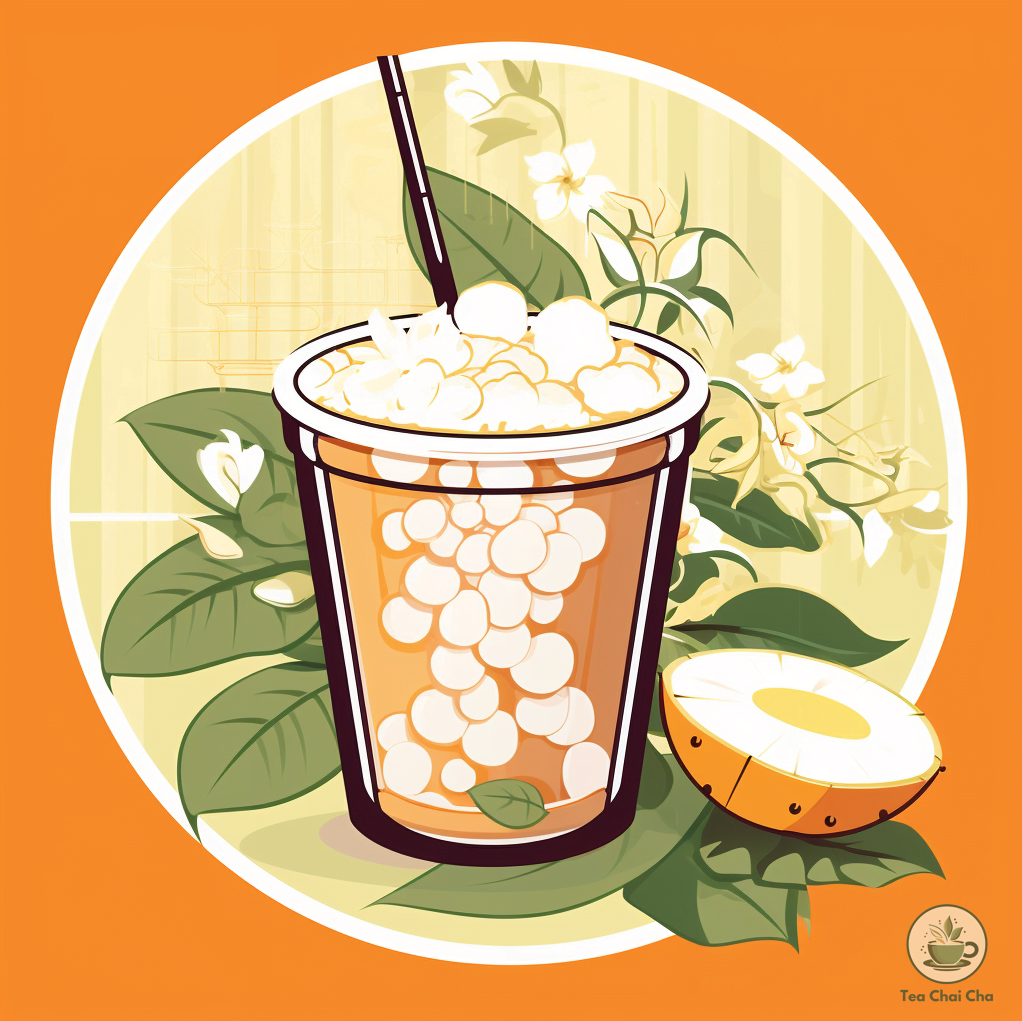
How to Make Oolong Tea with Milk
Now that you’ve mastered the art of brewing oolong tea, it’s time to add a delightful twist – oolong tea with milk.
This variation is a real treat, especially when you choose the right oolong roast level to complement the creamy goodness.
Selecting the Right Oolong Roast Level
When making oolong tea with milk, it’s best to go for a darker oolong.
The roasted flavors and robust profile of dark oolongs like Da Hong Pao or Bai Jiguan pair wonderfully with milk.
Step 1: Gather Your Ingredients
Here’s what you’ll need:
- 1 to 2 teaspoons of dark oolong tea leaves (adjust to taste)
- 8 ounces (about 240 ml) of fresh, filtered water
- 1/2 cup of milk (whole milk, skim milk, or your preferred milk alternative)
- Ice cubes
- Sweetener (optional) like honey or sugar
Step 2: Boil the Water
Start by boiling your water.
The ideal temperature for dark oolong with milk is around 195-200°F (90-93°C).
Step 3: Preheat Your Teapot or Infuser
Just like before, preheat your teapot or infuser by adding a bit of hot water, swirling it around, and then discarding it.
This keeps your tea nice and warm.
Step 4: Add Oolong Tea Leaves
Place your measured dark oolong tea leaves into the preheated teapot or infuser.
Step 5: Pour in the Hot Water
Gently pour the hot water over your oolong tea leaves.
Let them steep for about 5-7 minutes.
This allows the roasted oolong to infuse fully.
Step 6: Prepare Your Iced Tea
While your oolong is steeping, fill a glass with ice cubes.
Pour the brewed oolong tea over the ice to cool it down.
Step 7: Add Milk and Sweetener
Next, add 1/2 cup of milk to your iced oolong tea, adjusting the amount to your taste.
If you like it sweet, add honey or sugar and give it a good stir.
Step 8: Sip and Enjoy
Give it a gentle stir, and your creamy iced oolong tea is ready to delight your taste buds.
Sip slowly and savor the delicious blend of roasted oolong and creamy milk in this refreshing chilled beverage.
Related – What Does Oolong Milk Tea Taste Like? + Oolong Milk Recipe
Oolong Tea Hot or Cold
Whether you prefer your brew hot or chilled, there’s an oolong tea that’s just right for you.
Hot Oolong Tea
If you’re in the mood for a warm, comforting cup of tea, oolong has you covered.
After all, we’ve already covered the steps to brew a perfect hot oolong tea in the previous section.
Best Oolong Teas for Hot Tea
Dark Oolongs
These rich and robust varieties, like Da Hong Pao, are perfect for sipping hot.
They have deep flavors that come alive when brewed in hot water.
Light Oolongs
The more delicate and floral oolongs, such as Tieguanyin, are also wonderful choices for hot tea.
Their subtle flavors are best enjoyed when they’re warm and soothing.
Cold Oolong Tea
On a hot summer day or when you’re craving a cool and refreshing beverage, cold oolong tea is your go-to option.
It’s a great way to beat the heat and enjoy the unique flavors of oolong in a different way.
Best Oolong Teas for Cold Tea
Green Oolongs
These teas, with their fresh and floral notes, are excellent choices for making cold oolong tea.
They retain their vibrant flavors when chilled.
Milk Oolong
The creamy and slightly sweet notes of Milk Oolong shine when served cold.
It’s like an iced dessert in a glass.
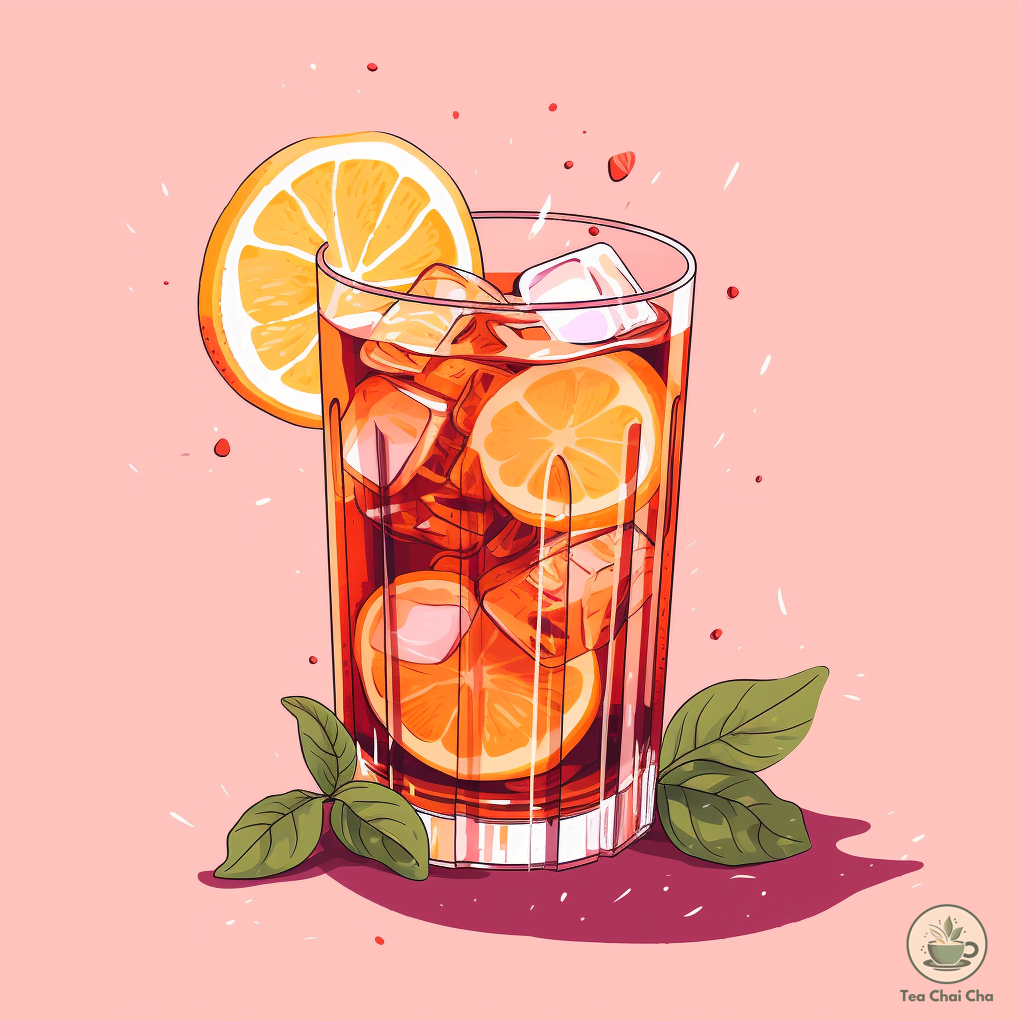
How to Make Oolong Iced Tea – Iced / Cold Brew
Before we jump into the methods, it’s worth mentioning that lightly roasted oolong teas are often the best choice for making iced tea.
Their bright and floral notes shine when served cold, making your iced tea experience even more enjoyable.
So, think green oolongs and floral oolongs like Tieguanyin for your iced tea adventures.
Iced Oolong Tea Method
Step 1: Gather Your Ingredients
For a single serving, you’ll need:
- 1-2 teaspoons of oolong tea leaves
- 8 ounces of fresh, filtered water
- Ice cubes
- Sweetener (optional)
- Slices of lemon or orange (optional)
Step 2: Brew Your Oolong Tea
Start by heating your water to the appropriate temperature for your oolong variety.
Remember, light oolongs like it cooler, around 175°F (80°C).
Add your oolong tea leaves to a teapot or tea infuser.
Pour the hot water over the leaves, covering them completely.
Let it steep for about 3-5 minutes.
Be cautious not to over-steep; you want your iced tea to be flavorful but not bitter.
Step 3: Cool and Serve
Once the tea has steeped to your liking, remove the tea leaves.
Allow the tea to cool for a few minutes, then transfer it to a glass filled with ice cubes.
If you like your iced tea sweet, add your preferred sweetener and stir until dissolved.
Garnish with slices of lemon or orange for an extra touch of freshness.
Cold Brew Iced Oolong Tea Method
Step 1: Gather Your Ingredients
For a single serving, you’ll need:
- 1-2 teaspoons of oolong tea leaves
- 8 ounces of cold, filtered water
- Ice cubes
- Sweetener (optional)
- Fresh mint leaves (optional)
Step 2: Prepare Your Cold Brew
Place your oolong tea leaves in a teapot or a large jar.
Pour in the cold water, making sure all the leaves are fully submerged.
Seal the container and refrigerate for at least 6 hours or overnight.
This slow brew extracts the tea’s flavors gently.
Step 3: Serve and Enjoy
Strain the cold brew into a glass filled with ice cubes.
If you prefer sweetness, add your sweetener of choice and give it a good stir.
For an extra touch, garnish with fresh mint leaves.
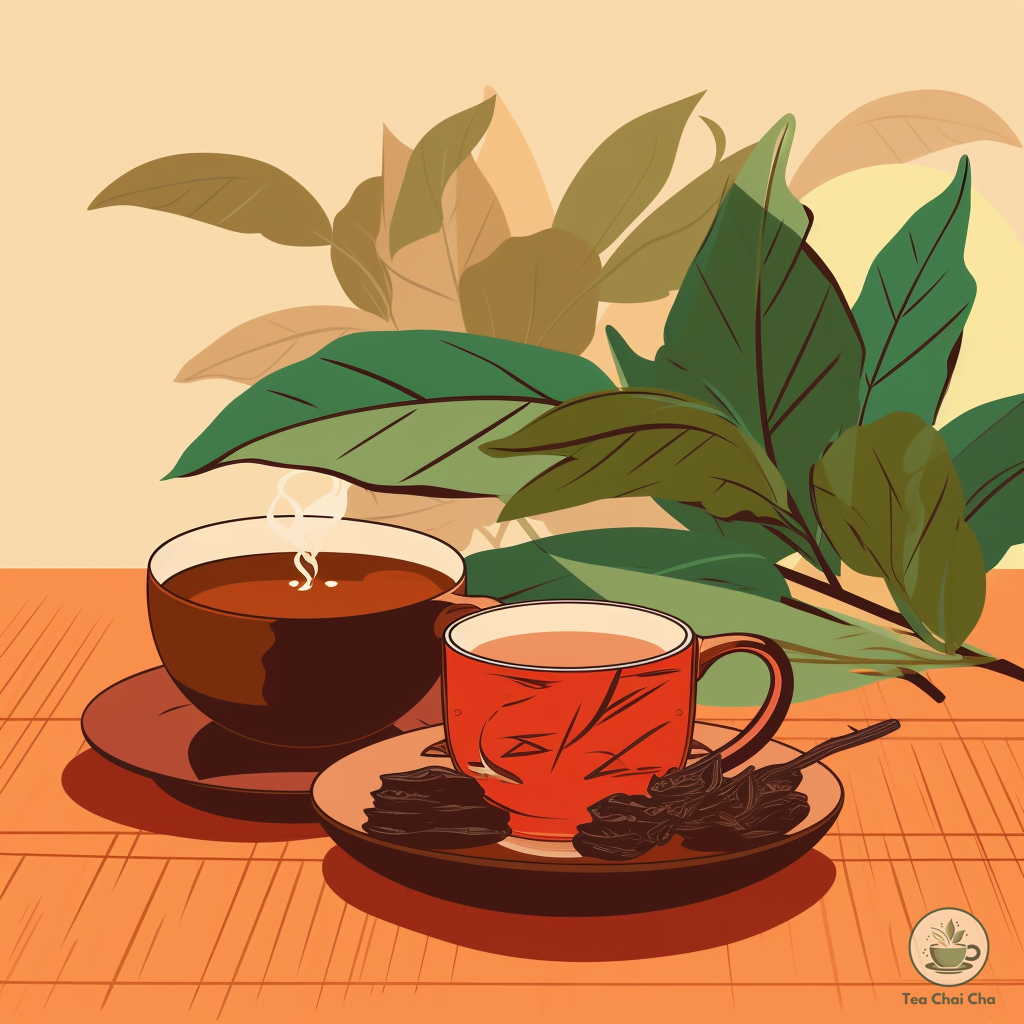
15 Oolong Tea Types to Try!
Now that we’ve dipped our toes into the oolong tea recipes, it’s time to dive deeper and discover some of the famous oolong tea types.
Each one has its own unique charm, and you might just find your new favorite among them.
1. Jin Xuan Oolong (Milk Oolong)
- Origin: Taiwan
- Characteristics: Known for its creamy, milky aroma and smooth, buttery texture.
- Taste: Offers a delightful combination of floral and milky notes.
- Roast Levels: Ranges from light to medium.
2. Tieguanyin Oolong (Iron Goddess of Mercy)
- Origin: China (Fujian Province)
- Characteristics: Distinctive for its tightly rolled leaves.
- Taste: A perfect balance of floral, fruity, and nutty flavors.
- Roast Levels: Can be found in various roast levels, from light to dark.
Read More – How to Make Tieguanyin Tea
3. Baozhong Oolong (Pouchong)
- Origin: Taiwan
- Characteristics: Known for its lightly twisted leaves and delicate aroma.
- Taste: Offers a fresh and floral flavor with a hint of sweetness.
- Roast Levels: Usually lightly roasted.
4. Dong Ding Oolong (Tung Ting)
- Origin: Taiwan
- Characteristics: Grown on Dong Ding Mountain, it’s often roasted for a rich, complex flavor.
- Taste: A balance of fruity and roasted notes with a sweet finish.
- Roast Levels: Varies from light to heavy roast.
5. Da Hong Pao Oolong (Big Red Robe)
- Origin: China (Wuyi Mountains)
- Characteristics: Known as the “Big Red Robe” oolong, it’s legendary and highly prized.
- Taste: Offers deep, mineral-rich, and roasted flavors with a touch of sweetness.
- Roast Levels: Typically medium to heavy roast.
Read more – How to Make Da Hong Pao Tea
6. Dongfang Meiren Oolong (Oriental Beauty)
- Origin: Taiwan
- Characteristics: Known as the “Oriental Beauty,” it’s crafted from leaves bitten by tea leafhoppers.
- Taste: Sweet, honey-like, and fruity flavors.
- Roast Levels: Light to medium roast.
7. Shui Xian Oolong (Narcissus or Water Sprite)
- Origin: China (Fujian Province)
- Characteristics: Named “Narcissus” due to its floral fragrance.
- Taste: Offers a complex profile with floral, fruity, and roasted notes.
- Roast Levels: Ranges from light to dark.
8. Wuyi Oolong
- Origin: China (Wuyi Mountains)
- Characteristics: Grown in mineral-rich soil, known for its rocky and robust flavor.
- Taste: Bold, mineral, and earthy with a lasting finish.
- Roast Levels: Typically medium to heavy roast.
9. Rougui Oolong
- Origin: China (Wuyi Mountains)
- Characteristics: Renowned for its cinnamon-like aroma.
- Taste: Spicy, with hints of floral and fruity notes.
- Roast Levels: Often medium to heavy roast.
10. High-Mountain Oolong (Ali Shan or Gao Shan)
- Origin: Taiwan
- Characteristics: Grown at high altitudes, resulting in a unique flavor profile.
- Taste: Varies depending on the specific mountain but often features floral and fruity notes.
- Roast Levels: Can be lightly roasted to preserve its delicate flavors.
11. Bai Jiguan Oolong (White Cockscomb)
- Origin: China (Fujian Province)
- Characteristics: Named “White Cockscomb” due to its appearance.
- Taste: Offers a combination of fruity and nutty flavors.
- Roast Levels: Generally lightly roasted.
Read more – How to Make Bai Ji Guan Tea
12. Shui Jin Gui Oolong (Golden Water Turtle)
- Origin: China (Wuyi Mountains)
- Characteristics: Known as the “Golden Water Turtle.”
- Taste: Offers a rich and robust flavor with mineral and roasted notes.
- Roast Levels: Medium to heavy roast.
Read more – How to Make Shui Jin Gui Tea
13. Ruan Zhi Oolong (Qing Xin)
- Origin: Taiwan
- Characteristics: Also known as “Qingxin,” it’s famous for its floral aroma.
- Taste: Delicate and floral with a slightly creamy texture.
- Roast Levels: Often lightly roasted.
14. Jade Oolong
- Origin: Taiwan
- Characteristics: Known for its beautiful jade-green leaves.
- Taste: Offers a fresh and floral flavor profile.
- Roast Levels: Generally lightly roasted.
15. Tie Luo Han (Iron Monk)
- Origin: Grown in Taiwan, particularly in the central region of Nantou.
- Characteristics: Known for its tightly rolled leaves, resembling dragonfly heads or pellets.
- Taste: Offers a complex flavor profile that combines floral, fruity, and honey-like notes.
- Roast Levels: Often lightly roasted to preserve its delicate flavors.
Read more – How to Make Tie Luo Han Tea
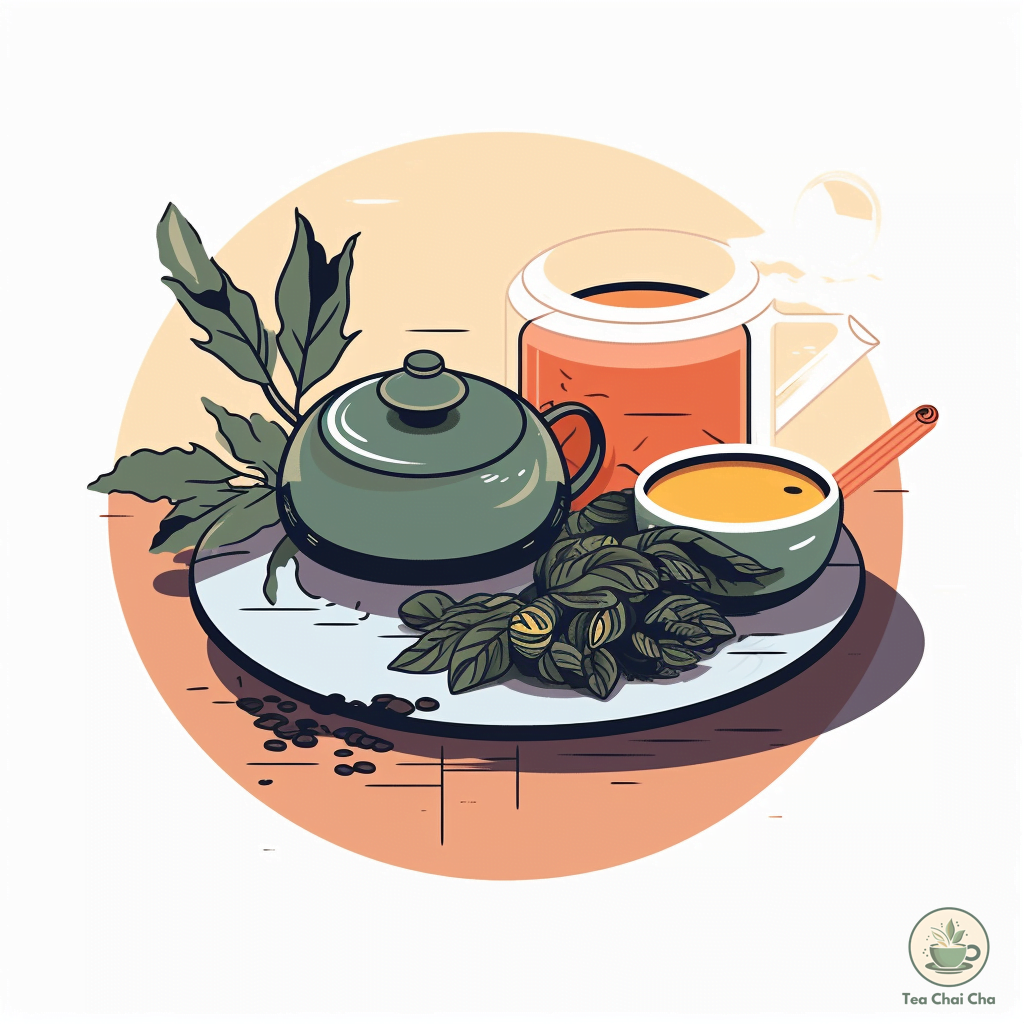
Still Not Sure Which Oolong to Choose?
Here I made this to help you find your perfect Oolong tea match.
Hope it helps! 😋
| Oolong Tea Type | Best for Beginners Who… | Best for Those Who… | Flavor Profile |
|---|---|---|---|
| Jin Xuan | Are new to oolong teas | Prefer creamy and milky notes | Creamy, milky, buttery |
| Tieguanyin | Are looking for an introduction to oolong | Enjoy a balance of floral, fruity, and nutty flavors | Floral, fruity, nutty |
| Baozhong | Want a gentle, easy-to-enjoy oolong | Like a fresh and floral taste | Fresh, floral, slightly sweet |
| Dong Ding | Are curious about medium roast oolongs | Crave a rich, complex flavor | Fruity, roasted, sweet |
| Da Hong Pao | Want to experience a famous oolong | Seek deep, mineral-rich flavors | Mineral-rich, roasted, sweet |
| Dongfang Meiren | Like sweeter, more approachable oolongs | Appreciate honey-like sweetness | Sweet, honey-like, fruity |
| Shui Xian | Are interested in exploring roasted oolongs | Prefer complex floral and roasted notes | Floral, fruity, roasted |
| Wuyi | Are open to bolder flavors | Desire bold and earthy flavors | Bold, mineral, earthy |
| Rougui | Enjoy teas with a kick of spice | Enjoy spicy and aromatic tea | Spicy, floral, fruity |
| High-Mountain | Want a variety of taste experiences | Like teas with varying flavor profiles | Floral, fruity, altitude-dependent |
| Bai Jiguan | Seek a balanced introduction | Enjoy a combination of fruity and nutty notes | Fruity, nutty |
| Shui Jin Gui | Prefer teas with robust character | Want a rich and robust taste | Robust, mineral, roasted |
| Ruan Zhi | Prefer a milder oolong | Prefer delicate, floral notes | Delicate, floral, slightly creamy |
| Jade Oolong | Are looking for a fresh and gentle option | Like fresh and floral flavors | Fresh, floral |
7 Factors That Affect the Flavor of Oolong Tea
Now that you’ve probably found your perfect oolong match, let’s check what makes these teas taste so different.
Oolong tea is like a treasure trove of flavors, and here’s a sneak peek into what influences those delightful tastes:
1. Oxidation Levels
Oxidation is the name of the game when it comes to oolong.
It’s like a volume knob for flavor.
The more oxidation, the deeper and darker the taste.
Light oolongs are less oxidized, giving you a floral and fresh vibe, while dark oolongs boast a richer, earthy taste.
So, pick your oxidation level wisely to match your flavor preference.
2. Tea Leaf Varieties
The type of tea leaves used can shake things up.
Each tea plant variety brings its own character to the party.
For example, Tieguanyin leaves are known for their floral, orchid-like notes, while Da Hong Pao’s leaves give off a deep, roasted flavor.
3. Processing Techniques
The way oolong is processed works like an artist’s brushstroke on a canvas.
Some teas are twisted and rolled, while others are left to wither and oxidize.
The craftsmanship behind each tea affects its flavor profile.
Rolled oolongs tend to have a concentrated taste, while the withering process can give a smoother, milder flavor.
4. Growing Regions
Just like grapes for wine, the place where oolong grows matters.
Different regions bring their unique magic to the tea.
Taiwanese oolongs have a reputation for their floral and fruity notes.
Fujian Province oolongs from China often have a roasted, mineral-rich taste.
5. Altitude
Believe it or not, the altitude at which the tea is grown can influence the flavor.
Higher altitudes often mean cooler temperatures, which slow down the tea growth.
This can result in more concentrated flavors.
So, if you like intense and complex tastes, go high!
6. Harvesting Time
The timing of the tea harvest can make a big difference.
Spring harvests are famous for their vibrant and delicate flavors, while later in the year, the tea can be bolder and more robust.
Think of it as catching the tea at its flavor peak.
7. Tea Leaf Quality
Now, let’s talk about the quality of the tea leaves themselves.
It’s a bit like choosing between a fine wine and a jug of juice.
Whole tea leaves, unbroken and intact, are like the premium stuff.
They tend to offer a more complex and nuanced flavor because they haven’t been shattered into pieces.
On the other hand, broken leaves, while still tasty, can provide a slightly different flavor profile, often leaning towards a quicker and stronger infusion.
So, when you’re on the hunt for that perfect oolong, consider the leaf quality too.
Whole leaves might be your ticket to a more refined and sophisticated flavor journey.
Besides, broken leaves could offer a bolder and quicker taste experience.
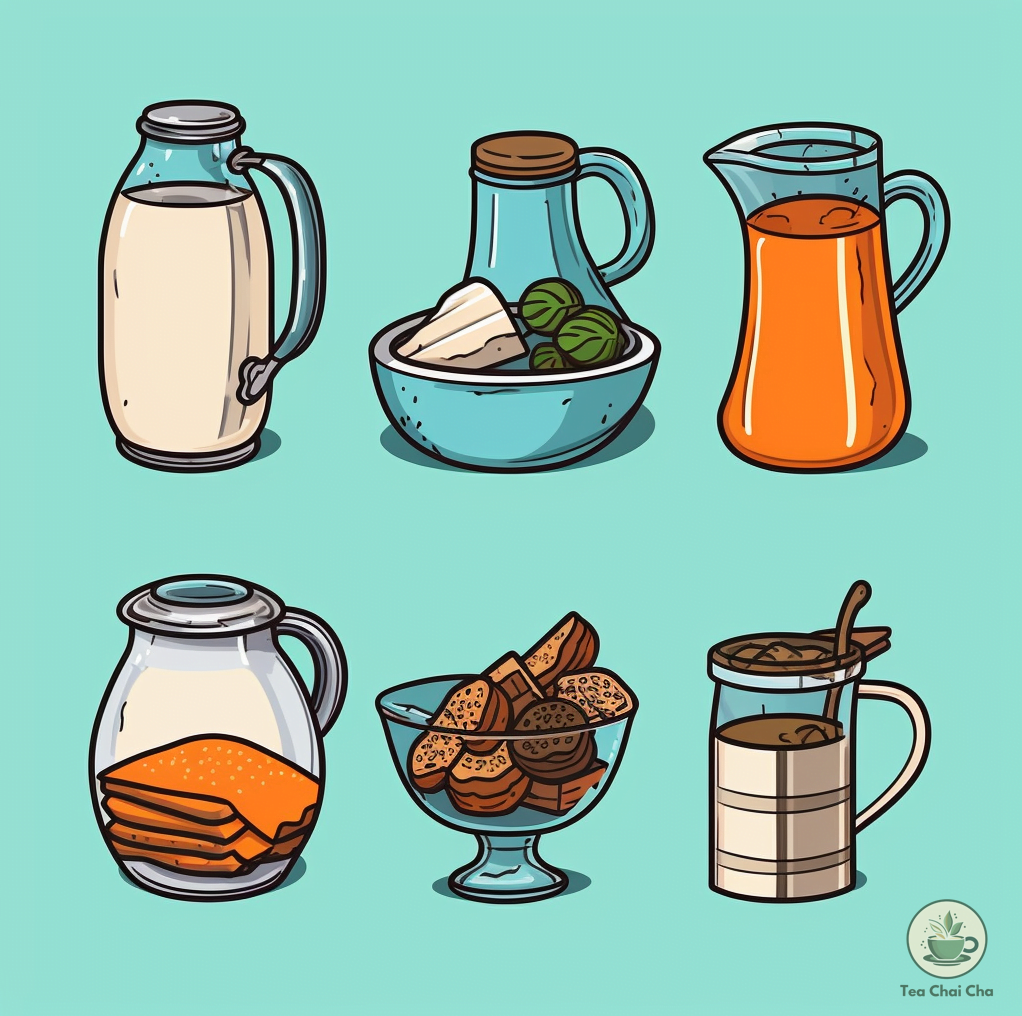
How to Make Oolong Tea Taste Better
If you’ve had a cup of oolong that didn’t quite hit the mark for your taste buds, fear not.
I’m here to share some tips on how to make oolong tea taste even better.
1. Adjust Brewing Time and Temperature
The first step to a tastier cup of oolong is nailing the brewing process.
The flavor can vary depending on how long you steep it and the water temperature.
If your tea is too bitter or too mild, try adjusting these factors.
Generally, oolong tea likes water around 185-200°F (85-93°C) and steeping times ranging from 2 to 5 minutes.
Experiment until you find your perfect balance.
2. Quality Matters
Invest in high-quality oolong tea leaves.
Better leaves often result in a more delightful brew.
Look for trusted brands or specialty tea shops for the good stuff.
Freshness counts too, so check the packaging date.
3. Tea Infuser vs. Teapot
Consider how you’re brewing your oolong.
Using a tea infuser in a cup or a teapot can make a difference in the flavor.
Tea leaves need space to expand and infuse properly.
If you’re using a small infuser, switch to a teapot to let the leaves breathe.
4. Experiment with Water
The type of water you use can affect the taste.
If your tap water has a strong taste or odor, it might influence your tea.
Try using filtered water or spring water to see if it makes a difference.
5. Add Some Flair
Now, let’s get creative!
There are various additions you can try to enhance your oolong tea’s taste:
- Citrus Zest: A twist of lemon or orange peel can add a refreshing zing.
- Honey: A touch of honey can bring out oolong’s natural sweetness.
- Ginger: Fresh ginger slices add a spicy kick.
- Mint Leaves: Fresh mint leaves can create a cool, soothing blend.
- Floral Notes: Experiment with edible flowers like lavender or rose petals for a unique aroma.
- Milk or No Milk: Some love a splash of milk in their oolong, while purists prefer it straight. Try it both ways to see what floats your boat.
6. Multiple Infusions, Anyone?
Here’s a fantastic oolong perk – you can often get multiple infusions from the same leaves.
Just increase the steeping time a bit with each new brew.
The flavor evolves with each infusion, and you get more mileage out of your tea leaves.
7. Leaf to Water Ratio
Using the right amount of tea leaves per cup is crucial.
For a standard 8-ounce (240ml) cup, about 1 to 1.5 teaspoons of loose oolong tea should do the trick.
Adjust it based on your cup size and personal taste.
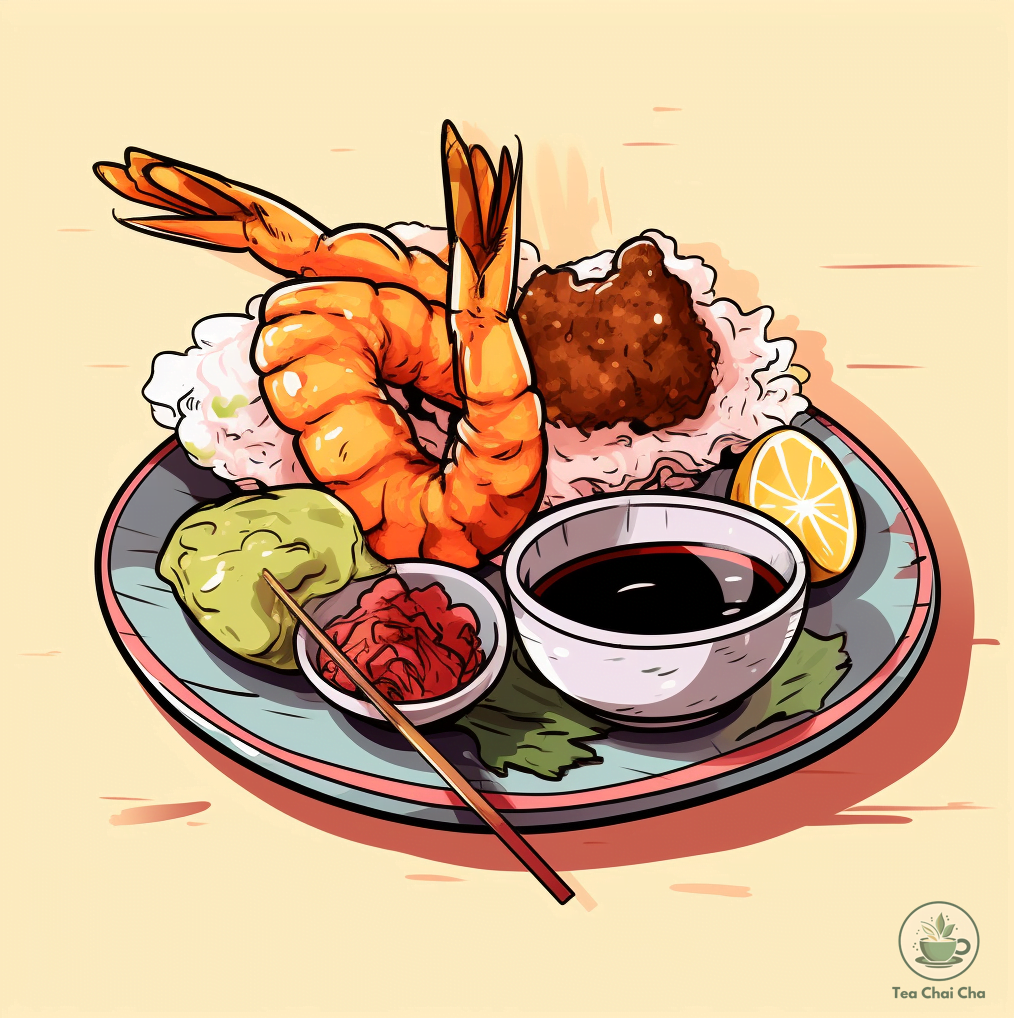
Oolong Tea Food Pairing
You know, one of the best ways to elevate your oolong tea game is by pairing it with the right foods.
Let’s dive into some delicious pairings, shall we?
1. Light Oolong and Seafood
When I’m sipping on a light oolong like Tieguanyin or a gentle Ali Shan, I love to bring out the seafood platter.
Think shrimp, scallops, or even a delicate white fish.
The floral notes of the tea dance harmoniously with the fresh ocean flavors.
2. Dark Oolong with Grilled Meats
Now, when you’re dealing with a bold and robust dark oolong such as Da Hong Pao or Bai Jiguan, it’s time to fire up the grill.
Juicy steaks, succulent lamb chops, or even some charred barbecue chicken – they’re the perfect partners.
The tea’s rich, toasty notes complement the hearty flavors of grilled meats. It’s like a barbecue fiesta!
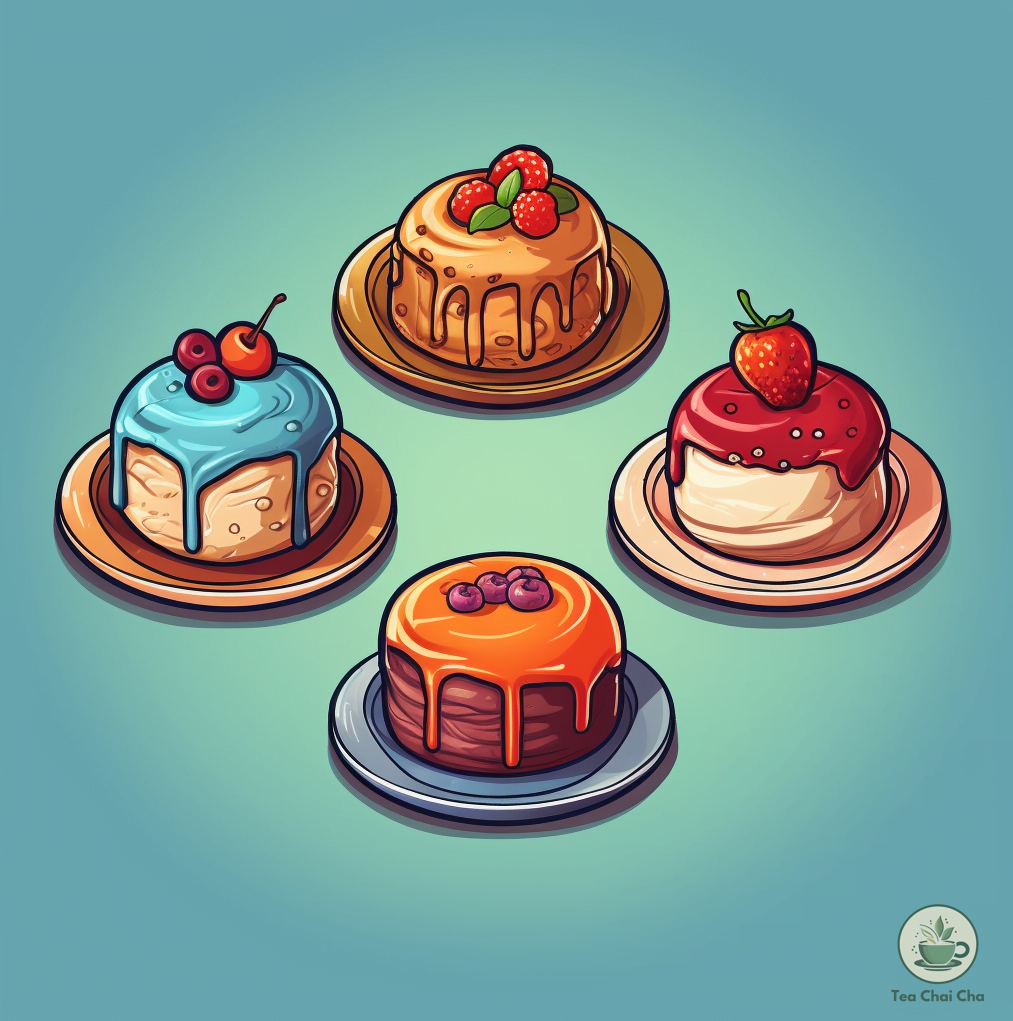
3. Green Oolong and Light Desserts
If you’ve got a green oolong like Tung Ting or a fragrant Bao Zhong, then you’re in for a treat.
Pair it with light desserts like fruity tarts, vanilla sponge cakes, or a plate of fresh berries.
The tea’s natural sweetness and floral hints create a symphony of flavors with these treats.
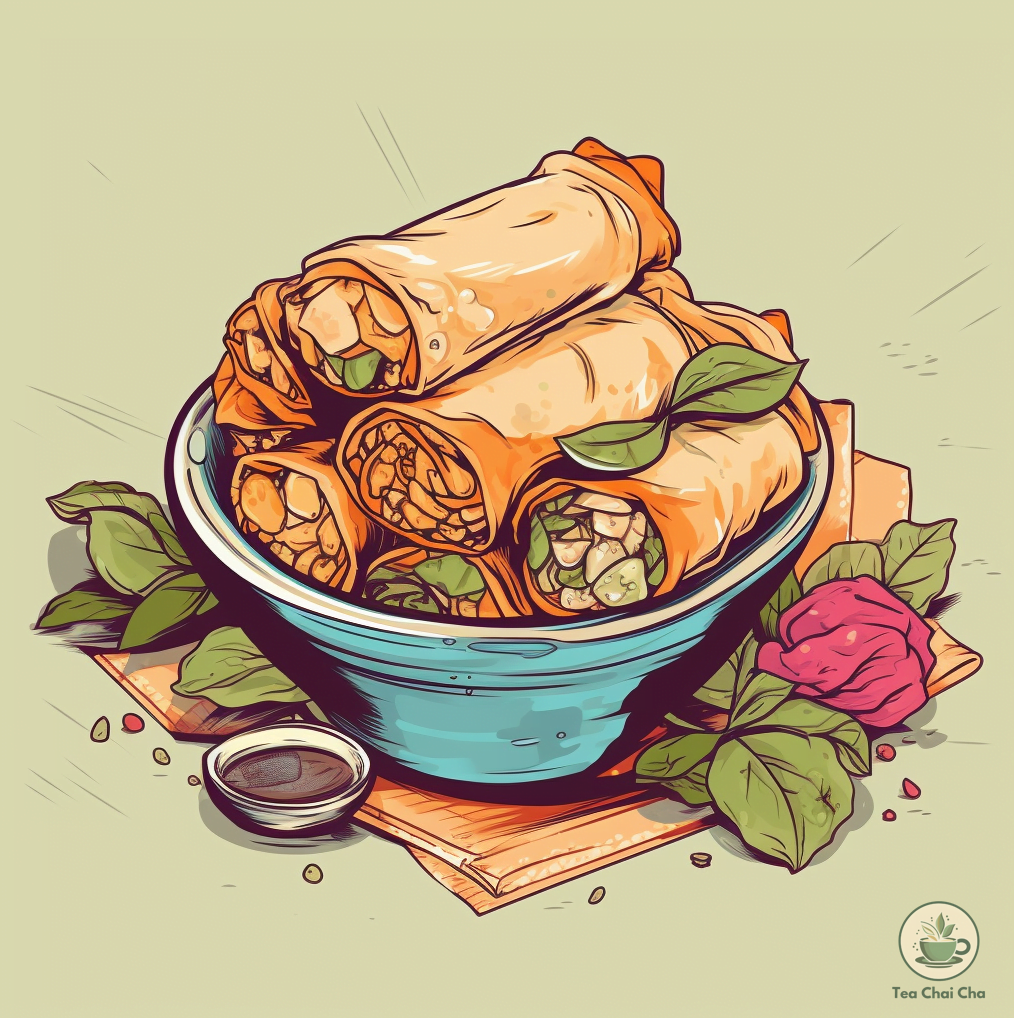
4. Milk Oolong with Asian Cuisine
Milk oolong, with its creamy, dreamy character, is a natural fit for Asian dishes.
Think sushi rolls, spring rolls, dim sum, or a bowl of spicy ramen.
The tea’s silky texture and gentle sweetness balance out the complex flavors of Asian cuisine.
My Tips for a Flawless Tea Pairing!
Now, here are some golden tips to make sure your tea and food pairing game is on point:
Balance is Key: Strive for a balance between the tea’s flavors and your food. You want them to complement, not overpower each other.
Experiment: Don’t be afraid to experiment. Try different foods with your oolong to discover your personal favorite pairings.
Consider Texture: Think about the texture of your food. Creamy? Crunchy? It matters. Creamy foods often go well with teas, creating a lovely contrast.
Temperature Matters: Match the temperature of your tea and food. Hot tea with hot dishes, and cold tea with cold snacks.
Palette Cleanser: Oolong can act as a palette cleanser between bites, preparing your taste buds for the next delicious flavor.
When to Drink Oolong Tea
Oolong tea – it’s not just a beverage; it’s an experience waiting to unfold.
But when should you savor this delightful brew?
Let me be your guide through the different occasions that pair perfectly with oolong tea.
1. Morning Serenity with Green Oolong
Start your day on a calm note with a cup of green oolong, like a refreshing Tung Ting.
Its gentle, slightly floral aroma is just the thing to ease into your morning routine.
Sip it as you watch the sunrise or read your favorite book.
It’s the peaceful beginning you deserve.
2. Midday Boost with Light Oolong
Feeling that midday slump?
Reach for a light oolong such as Tieguanyin or Ali Shan.
Its crisp, slightly fruity notes will perk you up without the jitters of caffeine.
It’s the perfect companion for a productive afternoon at work or a light lunch with friends.
3. Tea Time Elegance with Dark Oolong
When you want to add a touch of sophistication to your tea time, opt for a dark oolong like Da Hong Pao or Bai Jiguan.
Its deep, toasty flavors are ideal for an elegant afternoon tea gathering or as a cozy companion for your favorite novel.
Elevate your tea time to a new level of refinement.
4. Evening Relaxation with Milk Oolong
As the day winds down, unwind with the creamy allure of milk oolong.
It’s the perfect choice for a cozy evening in, perhaps paired with a good movie or a decadent dessert.
Let the soothing flavors of this tea melt away your stress.
5. Special Celebrations with Rare Oolong
For those extraordinary moments in life, break out the rare oolongs like Wuyi rock tea or aged Tieguanyin.
These teas are like liquid gold and deserve to be savored on special occasions like anniversaries, birthdays, or when you simply want to treat yourself to the finer things in life.
Related Guides
Classic Oolong Tea Recipe
Recipe by Tania FaysalCourse: DrinksCuisine: Chinese, Japanese1
servings1
minute2
minutes2-4
kcal3
minutesThis is a general recipe to brew your favorite Oolong tea in no time!
Ingredients
1-2 teaspoons of oolong tea leaves (per 8-ounce cup)
Fresh, filtered water
Directions
- Measure Your Oolong Tea Leaves: Start by measuring 1-2 teaspoons of oolong tea leaves for each 8-ounce cup. Adjust the quantity to suit your taste preferences.
- Heat Your Water: Bring fresh, filtered water to a boil and then let it cool slightly. The ideal water temperature depends on the type of oolong:
For light oolongs, aim for around 185°F (85°C).
For dark oolongs, go a bit hotter at about 195°F (90°C).
Green oolongs shine at a cooler 175°F (80°C). - Preheat Your Teapot or Infuser: Pour a small amount of hot water into your teapot or infuser to warm it up. Swirl it around and then discard the water. This helps maintain the tea's temperature during brewing.
- Add Your Oolong Tea Leaves: Place the measured oolong tea leaves into the teapot or infuser.
- Pour in the Hot Water: Gently pour the hot water over the oolong tea leaves, ensuring that they are fully covered. This allows the leaves to unfurl and release their flavors.
- Steep Your Oolong Tea: Set your timer according to the oolong type:
Light oolongs: 3-5 minutes.
Dark oolongs: 5-7 minutes.
Green oolongs: 2-3 minutes. - Sip and Savor: When the timer goes off, your oolong tea is ready to enjoy. Pour it into your cup or mug and savor the unique aroma and taste with each sip.
Recipe Video
Notes
- Storing Brewed Oolong Tea: If you have leftover brewed oolong tea, store it in the refrigerator in an airtight container. It's best to consume it within 24 hours to preserve the flavor.
- Resteeping: Don't throw away those oolong leaves after the first brew. You can resteep them multiple times, each time revealing new flavors. Just add a bit more hot water and adjust the steeping time based on your preference. Steep for 30 seconds more after each brewing.
- Rinse the Leaves: Before brewing, pouring a bit of hot water on the leaves and then discarding it can help clean the leaves and open them up for the proper steeping. It's about giving them a little wake-up call.
Frequently Asked Questions (FAQs)
What does Oolong tea taste like?
Oolong tea can have a wide range of flavors, from fruity and floral to nutty and toasty.
It’s known for its complexity and often strikes a balance between green and black tea flavors.
Does Oolong tea have caffeine?
Yes, oolong tea contains 0-75 mg of caffeine per 8 oz. serving, but the caffeine levels vary depending on the type of oolong and how it’s prepared.
Generally, it has less caffeine than black tea but more than green tea.
Is Oolong a real tea?
Absolutely! Oolong is a true tea made from the Camellia sinensis plant, just like green, black, and white teas.
How many calories are in Oolong tea?
Oolong tea is very low in calories.
A typical cup of plain oolong tea has about 2-5 calories, depending on the brewing method and any added ingredients.
How to make oolong tea sweet?
To sweeten oolong tea naturally, you can add a touch of honey, stevia, or agave syrup while the tea is still hot.
Adjust the sweetness to your taste. Avoid adding too much sugar to fully appreciate the tea’s flavors.
How to make oolong tea jelly?
To make oolong tea jelly, brew a strong cup of oolong tea, sweeten it to your liking, and then add gelatin to create the jelly texture.
Refrigerate until it sets.
You can also experiment with adding fruit juice for extra flavor.
